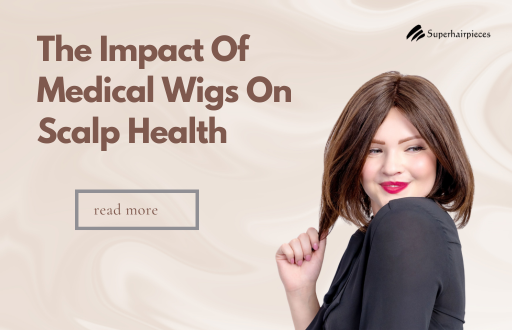
Medical wigs are becoming very popular among individuals losing hair due to illness. They act as the perfect accessory for giving patients a sense of normalcy as they struggle to navigate through the complexities of the disease. However, since individuals suffering from different diseases and treatments develop varied issues that lead to hair fall, it is essential to understand scalp health and assess the potential impact of wigs on their scalp. This article explores how it helps ensure you do not suffer issues like scalp irritation when wearing the wig.
Challenges Of Wearing Medical Wigs
Although wigs offer significant advantages, boosting confidence in patients struggling with life-altering diseases, they also have challenges that must be understood.
- Sensitivity and Irritation Of Scalp: One of the most common things people can experience from wearing wigs is scalp irritation. This happens primarily because patients have a highly sensitive scalp and compromised skin health, which can easily lead to irritation. You may notice signs like scalp redness, discomfort, or itching while wearing the wig. Choosing wigs made of soft fibers built on a very smooth and comfortable base material is essential. These can help ease the irritation effectively.
- Restricted Airflow: If a patient wears the wigs for prolonged periods, they may experience sweating on the scalp due to a lack of airflow. Such restricted air flow and consequent sweating can cause a lot of discomfort to the wearer. It can also lead to fungal or bacterial growth on the scalp, leading to issues like scalp odor, dandruff, and even infections.
- Dry and Flaky Skin: Another issue you can notice is the development of dry and flaky skin on the scalp. This typically happens because the scalp is not exposed to natural air and oils. A dry scalp can cause a lot of itchiness and dandruff, making the experience of wearing the wigs challenging and uncomfortable for the patients. Opting for lightweight and breathable materials can help make the issue less intense. Also, ensure you do not wear the wigs for long periods daily.
- Headaches: Depending on the kind of wigs women wear, they can also experience headaches from wearing them for long periods. This mostly happens if your wig does not fit you correctly or is excessively tight or heavy. In certain extreme cases, the user may also develop pressure sores, which can cause discomfort.
Preventing Scalp-Related Issues
Learning about these challenges can make adopting wigs designed especially for patients seem daunting. However, these are not issues that will impact everyone who follows some essential maintenance tips and can ensure that you can enjoy the wig-wearing experience and the confidence it offers without suffering the uncomfortable side effects it can cause. If you are planning to get a medical wig or already have one, follow the hygiene practices below to keep the wigs healthy and free of scalp irritation and infection.
Regular Scalp Cleaning
The scalp, with or without hair, produces sebum and sweat, which gathers on its top and needs to be removed. Regularly cleansing the scalp will prevent the excessive oils from causing issues. The accumulated dust and sweat can also make the scalp a breeding ground for bacterial and other infections, which makes regular cleansing essential. You must choose a gentle cleanser to clean the scalp as it will be sensitive and unable to bear harsh chemical-laden products. Moreover, individuals with dry and flaky scalps should use a light moisturizer post-wash to maintain hydration.
Selecting Optimal Materials
Another way to ensure you do not suffer the harmful effects of wearing a wig is to choose the wig carefully. Human hair wigs constructed on light, breathable, and soft materials like lace are among the best options. If your budget allows, try avoiding synthetic hair wigs, which can be rough and uncomfortable. If you have the opportunity, you can also look into customized wigs, where you can tailor every aspect to your liking. These also ensure optimal fitting, preventing the chance of developing sores or headaches.
Clean Wigs
Just as it is vital to maintain scalp hygiene, it is also essential to keep the hygiene of the wigs; as such, washing and cleansing the wig periodically and correctly is a critical practice. This is important to help the wig get rid of any sweat and oils it may have absorbed and any adhesives that may have been used to secure it to the scalp. Generally, cleaning every 10 to 15 wears is recommended; however, depending on your needs, you can assess how often to wash the wig.
Boost Scalp Health
Enhancing scalp health is vital to alleviating any issues the scalp may be experiencing, such as mild irritation or discomfort. For instance, massaging the scalp can make a massive difference by boosting blood flow. This, in turn, minimizes the chances of developing soreness and also helps ease the headaches that you might experience after wearing the wig for long periods.
Conclusion
The role played by medical wigs in the lives of individuals who have lost hair due to an illness is transformational. By taking their minds off the illness’s challenges, wigs help motivate these individuals to lead regular lives, socialize with their friends and families, and not try to isolate themselves. However, when choosing wigs, you must go beyond choosing what makes you feel good and learn proper maintenance techniques to ensure you enjoy wearing them without discomfort.
Related